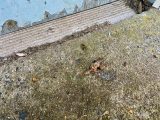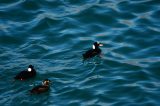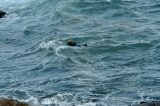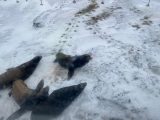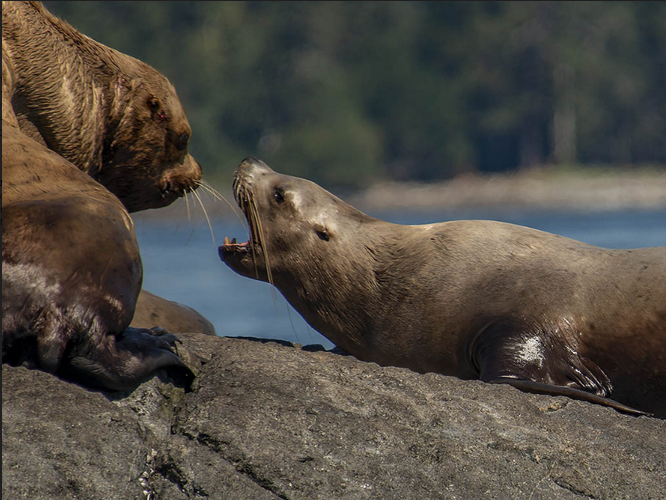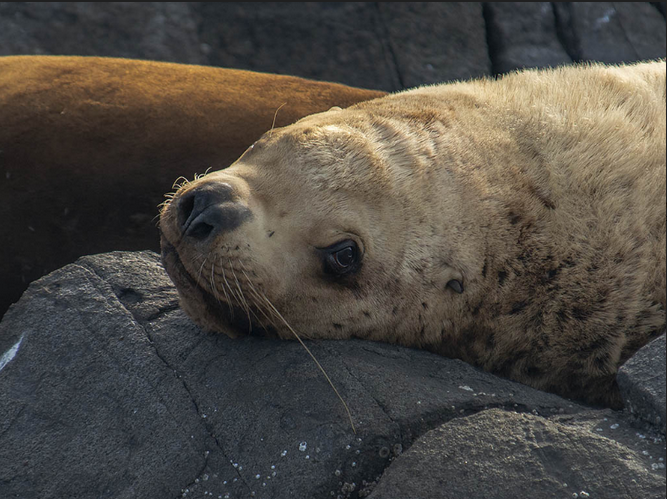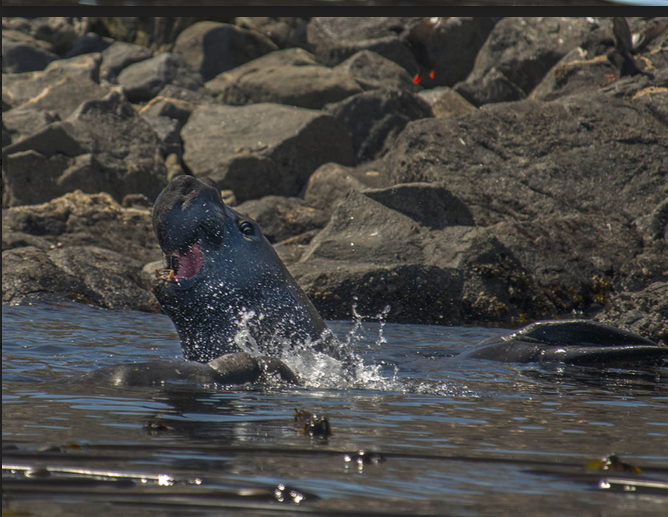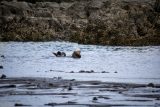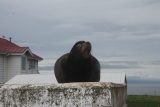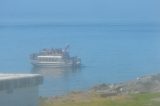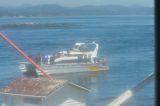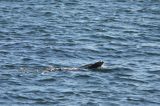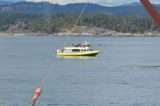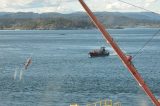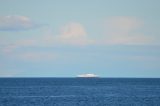Wind: yesterday 4-15 knots from E to N, today 0-13 knots from N to SW to W
Sea State: yesterday rippled, today calm
Visibility: yesterday 10-15 NM, today 15 NM
Sky: yesterday overcast, today clear
Temperature: yesterday 5-7 °C, today 5-10 °C
Atmospheric CO2: 413.50 ppm (recorded by NOAA at Mauna Loa Observatory, Hawaii)
The oldest elephant seal pup and I have something in common. We both had a short trip from the main island for the first time since December. He was born December 29 and hasn’t eaten since his mother stopped nursing him and left on January 21.
Yesterday, the male pup took the plunge and went for a swim in the mid morning. I saw him at the water’s edge on the boat ramp at 8:45, blowing bubbles in the water and wriggling around. He was gone the next time I checked about 15 minutes later. I spotted him again, with wet fir by the boat house door at 11:45. I wonder what he got up to out in water and how far he swam.
My adventure off the island was this afternoon in the Race Rocks boat. I hadn’t left the island since I got here on December 21, as I’m purposely spending 100 days living in the ecological reserve as research for my masters thesis on place-based learning and near-solitude. It was perfect conditions to launch the boat with low winds, clear sky and a turn of the current at 13:16. I motored at a low speed clockwise around the main island, Great Race Rocks, never straying more than a kilometre away from my rocky home of the past two months. Along the way, I took some photos and tested out all the equipment on the boat. The boat ran well. I had never seen any of the other rocks up close or what they looked like from the side I can’t see from the main island. Behind West Rocks, which is west of Great Race Rocks, there was a sea otter floating in the water. I cut the engine and watched it float around for about ten minutes, before it swam away to the northwest. What a treat to see the otter, oystercatchers in flight, harbour seals lounging on the rocks and views of main island from all angles.
After I returned, I did some maintenance to the boat dolly which could only be done with the boat off of it. I greased the very dry wheel bearings and installed a new winch to secure the boat to the dolly.
Yesterday, Greg and Silke came in the early afternoon to pick up Hamish and Hubert, who spent the night. There were two tour boats in the ecological reserve today.
See below for photos from the past two days. Photos have been added to the past three posts now that the photo uploading is working again.
- A stretching session before the oldest pup, a male, goes into the water for the first time.
- The male pup is near the boat ramp a few hours after his swim. He is spreading out his tail flippers appearing to show off his newly acquired swimming ability.
- A view of Great Race Rocks from the east
- Harbour seals on Middle Rocks
- Two black oystercatchers in flight
- West rocks in the foreground
- A sea otter to the west of Great Race Rocks
- The sea otter with Victoria in the background
- Sea otter seen through the long lens
- Harbour seals on Middle Rocks with cormorants in the background on Great Race Rocks
- Great Race Rocks from the north near North Rocks
- I was putting some tools away when an adult male elephant seal chased the male pup towards the open door of the tank shed. I ducked inside and closed the door, just before they got there. I couldn’t get out for a few minutes, until the adult left. I’ve learned my lesson to keep doors closed.
- When the pup was trying to get into the tank shed, he pooped outside the door. Perhaps he was scared poopless by the male chasing him. The poop appears to show that he ate food on his foray into the sea yesterday.












